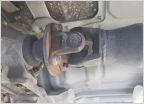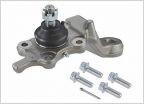-
Welcome to Tacoma World!
You are currently viewing as a guest! To get full-access, you need to register for a FREE account.
As a registered member, you’ll be able to:- Participate in all Tacoma discussion topics
- Communicate privately with other Tacoma owners from around the world
- Post your own photos in our Members Gallery
- Access all special features of the site
Pants shitting moment (got zapped changing plugs, now it wont start)
Discussion in '1st Gen. Tacomas (1995-2004)' started by Alderleet, Sep 16, 2012.
Page 3 of 3
Page 3 of 3


 Mixed u-joint types on my '02 2WD
Mixed u-joint types on my '02 2WD LCA w/ ball joint
LCA w/ ball joint 33-230351 bilstein fits on 2002 tacoma 1st gen
33-230351 bilstein fits on 2002 tacoma 1st gen 00' Coolant Specs
00' Coolant Specs Help: Spicer u-joint part #s
Help: Spicer u-joint part #s











































































